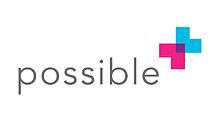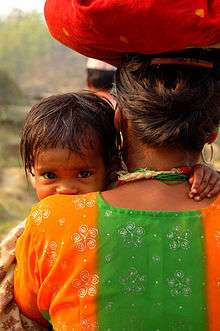Possible Health
 | |
| Founded | 2005 |
|---|---|
| Founder |
|
| Type | Healthcare Non Governmental Organization |
| Location | |
Area served | Achham, Nepal |
| Mission | Possible is a nonprofit healthcare company that delivers high-quality, low-cost healthcare to the world’s poor. The organization is pioneering an approach called durable healthcare, which brings together the best of private, public, and philanthropic models. |
| Website |
www |
Possible (formerly known as Nyaya Health[1] ) is a non-governmental organization (NGO) that delivers high-quality, low-cost healthcare to the world’s poor. The organization currently manages the healthcare system in Achham, a district in the Far Western region of Nepal via a public-private partnership with the Nepali government's Ministry of Health and Population.[2] Since 2008, Possible has treated over 275,000 patients in rural Nepal[3] through a durable healthcare system of government hospitals, clinics, and community health workers.[4]
Since the earthquakes this spring, Possible has committed to building back the healthcare system differently, and is expanding its model to Dolakha District—where 87 % of the healthcare facilities were destroyed.
This year, Possible's CEO Mark Arnoldy and Co-Founder Duncan Maru were named Schwab Foundation Social Entrepreneurs of the year.
In 2014, Possible's Chief Strategy Officer and Co-Founder Dr. Duncan Maru was awarded an Early Independence Award from the National Institutes of Health (NIH) to scientifically assess certain aspects of our rural healthcare delivery model.
In 2013, Possible won Sappi's Ideas That Matter design competition[5] which enabled the organization to launch its Crowdfund Health campaign on 2 December 2013.[6]
Possible is a partner project [7] of Partners in Health [8] and in 2012, PIH co-founder Paul Farmer spent time working alongside the Possible team in Achham.[9]
Philosopher Peter Singer's organization, The Life You Can Save (named for his book The Life You Can Save) lists Possible as one of its Top 10 Recommended Charities where donors can give most effectively.[10]
In 2011, the charity evaluator GiveWell rated Possible, then Nyaya Health, in the top 1% of charities they evaluated for being proven, cost-effective, underfunded, and outstanding .[11]
History

- Possible spent the next year doing epidemiological studies, negotiating with the Nepali local and central governments, establishing supply chains, and raising funds. A former grain shed in Sanfe Bagar, Achham District, was selected as the site for Possible's first clinic, The Sanfe Bagar Medical Clinic.[17]
- In 2007, Possible was selected as one of three organizations around the world to be beneficiaries of an international design contest sponsored by Open Architecture Network and AMD.[18][19] The design challenge was for a telemedicine center, and was won by Max Fordham LLP of London, UK.[20] However, the telemedicine center was never built due to lack of funding.
- The Sanfe Bagar Medical Clinic was opened on 6 April 2008. Initial programs focused on maternal health, child malnutrition, and HIV and tuberculosis treatment.[15]
- Soon after the opening of the Sanfe Bagar Medical Clinic, the community requested that Possible take over administration of the nearby Bayalpata Hospital. The hospital was built in 1976, but had never been staffed and had fallen into disrepair. Possible joined in a formal contractual partnership with the Nepal Ministry of Health and Population to jointly renovate and scale up services at the facility over a period of five years. The hospital opened 21 June 2009.[21][22][23]
- In September 2009, Possible instituted a new Mortality Review Program.[26] Each death occurring at the Bayalpata hospital is reviewed by both the Nepali and international teams for systems-level changes to prevent future deaths.[27] The de-identified reports are then published for review by the Web community.[28]
- In 2010, the hospital revamped and expanded its Community Health Worker program by integrating it with the Nepali government's Female Health Care Volunteer program. To do this, an agreement was negotiated whereby Possible would pay the women volunteers for performing certain tasks, thus raising the status of the women and establishing accountability.[29]
- On 2 December 2013, Possible launched its Crowdfund Health campaign using funds awarded by Sappi's Ideas That Matter design competition.[30]
- On 18 March 2014, the organization officially changed its name from Nyaya Health to Possible.[31]
- In December of 2014, Dr. Duncan Maru was awarded an Early Independence Award from the National Institutes of Health (NIH).
- In February 2015, the team implemented Nepal's first integrated Electronic Medical Record (EMR) system.
Organizational Structure
Possible is organized as two closely connected NGOs, the Nepal-based NGO that implements health programs in partnership with the Nepali Ministry of Health and Population, and the International NGO that provides technical assistance and fundraising for the Nepal NGO.[32] Many of the INGO volunteers are young Nepalis who have gone abroad for higher education and are now using their skills to improve conditions in their homeland.[33]
Advocacy
In addition to providing free healthcare in Achham, Possible's international volunteers, both individually and collectively, act as advocates for various topics affecting the wellbeing of the poor in rural Nepal. Some examples include the cultural and economic forces that result in resource denial,[34][35][36] the status of women,[37] domestic violence,[38] active screening for visceral leishmaniasis,[39] and the need for political decentralization in order to bring about socio-economic transformation in underprivileged areas.[40]
External reviews
GiveWell review
In November 2011, US-based charity evaluator GiveWell listed the organization then known as Nyaya Health among six standout organizations to donate to. Nyaya Health was placed below GiveWell's top recommended charities Against Malaria Foundation and Schistosomiasis Control Initiative and alongside GiveDirectly, Innovations for Poverty Action, KIPP (Houston branch), Pratham, and Small Enterprise Foundation.[11]
GiveWell also published a detailed review of Nyaya Health in November 2011.[41]
In November 2012, GiveWell discontinued putting out its list of standout charities.
Funding
Possible solicits donations on its website.
Total financial revenue for fiscal year 2013 was $1,259,190, broken down as follows:
- 69% Foundations and partner organizations
- 18% Individual gifts
- 10% Corporate gifts
- 3% Nepali government[42]
In August 2012, Good Ventures announced a $50,000 (USD) donation to Nyaya Health on the strength of charity evaluator GiveWell's recommendation.[43]
References
- ↑ "Possible - FAQ". Retrieved 23 April 2014.
- ↑ Maru, Duncan. ""The Most Important Signature of 2013"". Retrieved 23 April 2014.
- ↑ "Possible - "Our Impact"". Retrieved 23 April 2014.
- ↑ "Possible - "Our Model"". Retrieved 23 April 2014.
- ↑ "Sappi Fine Paper Announces Grant Recipients for the 14th Annual Ideas that Matter Program". Retrieved 23 April 2014.
- ↑ "Crowd-sourcing Nepal’s rural healthcare". IRIN. 20 December 2013. Retrieved 23 April 2014.
- ↑ "Partner Projects". Partners In Health.
- ↑ "Nyaya Health / Nepal". Partners In Health.
- ↑ Farmer, Paul. "Reflections from Nepal". Retrieved 23 April 2014.
- ↑ "The Life You Can Save - "Peter Singer's Most Effective Charities"". Retrieved 23 April 2014.
- 1 2 "Top Rated Charities". GiveWell.
- ↑ Sale, Claire (24 January 2011). "FACT Featured Project Interview: Ryan Schwarz From Nyaya Health". NetSquared. External link in
|publisher=(help) - ↑ "Nyaya Health Timeline". Nyaya Health Wiki. External link in
|publisher=(help) - ↑ "Conversation with Duncan Maru". GiveWell. 17 March 2011.
- 1 2 Subrahmanyam, Divya (1 February 2008), "Bringing hope to Nepal", Yale Daily News
- ↑ Bernardo, Mary Lou (26 May 2008), "Nyaya Health: Improving Healthcare in Western Nepal", Angels in Medicine External link in
|newspaper=(help) - ↑ "Nyaya Health 2007 Annual Report" (PDF). Nyaya Health. External link in
|publisher=(help) - ↑ Oppenheim, Leonora (12 October 2007), AMD Open Architecture Asia Challenge: Nyaya Health, Nepal, TreeHugger
- ↑ Sinclair, Cameron (15 January 2008), Visiting Nyaya Health in Sanfebagar, Nepal, Cameron Sinclair
- ↑ "AMD Open Architecture Challenge | Asia". Open Architecture Network.
- ↑ Schwarz, Dan (4 March 2010), "Developing a health system: The case of Nyaya Health in rural Nepal", Health and Human Rights External link in
|journal=(help) - ↑ Tewari, Kanupriya (2 August 2010), PIH-supported project in Nepal celebrates hospital’s first anniversary, Partners in Health
- ↑ Bhattarai, Anil (January 2010), "Health is not the only DISEASE", Hardnews External link in
|journal=(help) - ↑ Maru, Duncan; Schwarz, Ryan; Andrews, Jason; Basu, Sanjay; Sharma, Aditya; Moore, Christopher (14 October 2010), "Turning a blind eye: the mobilization of radiology services in resource-poor regions", Globalization and Health 6, doi:10.1186/1744-8603-6-18 External link in
|journal=(help) - ↑ Mathema, Paavan (19 November 2010), "Resurrection Achham", Nepali Times (528)
- ↑ Kanupriya, Tewari (2 August 2010), PIH-supported project in Nepal celebrates hospital’s first anniversary, Partners in Health
- ↑ Maru, Duncan (29 October 2009), Nyaya Health’s Mortality Review Program, Nyaya Health External link in
|publisher=(help) - ↑ "Mortality Data", Nyaya Health Wiki External link in
|journal=(help) - ↑ Duncan, Maru (10 April 2011), Following up: Update on Nyaya Health’s Community Health Worker Program, Nyaya Health External link in
|publisher=(help) - ↑ "Sappi Fine Paper Announces Grant Recipients for the 14th Annual Ideas that Matter Program". Retrieved 23 April 2014.
- ↑ none, none (22 March 2014), FAQ, Possible FAQ External link in
|publisher=(help) - ↑ "Nyaya Health Organizational Structure", Nyaya Health Wiki External link in
|journal=(help) - ↑ Thapa, Saurav J. (18 March 2011), "Diaspora - How young Nepalis abroad are serving their country", MyRepublica
- ↑ Acharya, Bibhav (9 January 2009), "The Myth of Beautiful Poverty", Atrium Magazine External link in
|journal=(help) - ↑ Acharya, Bibhav (28 January 2011), "A Default State", Nepali Times
- ↑ Acharya, Bibhav (11 March 2011), "Cause of Death", Atrium Magazine External link in
|journal=(help) - ↑ Rajbhandari, Ruma (4 December 2009), "Unwanted in Achham" (PDF), Nepali Times (479)
- ↑ Poudya, Agya, "NEPAL: Women survive violence with help from rural Nyaya health clinic", Women News Network External link in
|journal=(help) - ↑ Schwarz, Dan; Andrews, Jason; Gauchan, Bikash (2011), "Visceral Leishmaniasis in Far Western Nepal: Another Case and Concerns about a New Area of Endemicity", The American Society of Tropical Medicine and Hygiene 84 (3), doi:10.4269/ajtmh.2011.11-0021 External link in
|journal=(help) - ↑ "NRN USA calls for capacity building for Nepal's development", Nepal News, 12 April 2011 External link in
|journal=(help) - ↑ "Nyaya Health (GiveWell review)". GiveWell. 2011-11-28.
- ↑ "Nyaya Health Annual Report 2013" (PDF). Retrieved 23 April 2014.
- ↑ "Grants to "standout" charities". Good Ventures. 2012-08-06.
External links
- Possible Web site
- For-Impact Culture Code
- Government of Nepal, Ministry of Health and Population
- Crowdfund Health
- Partners in Health, Nepal